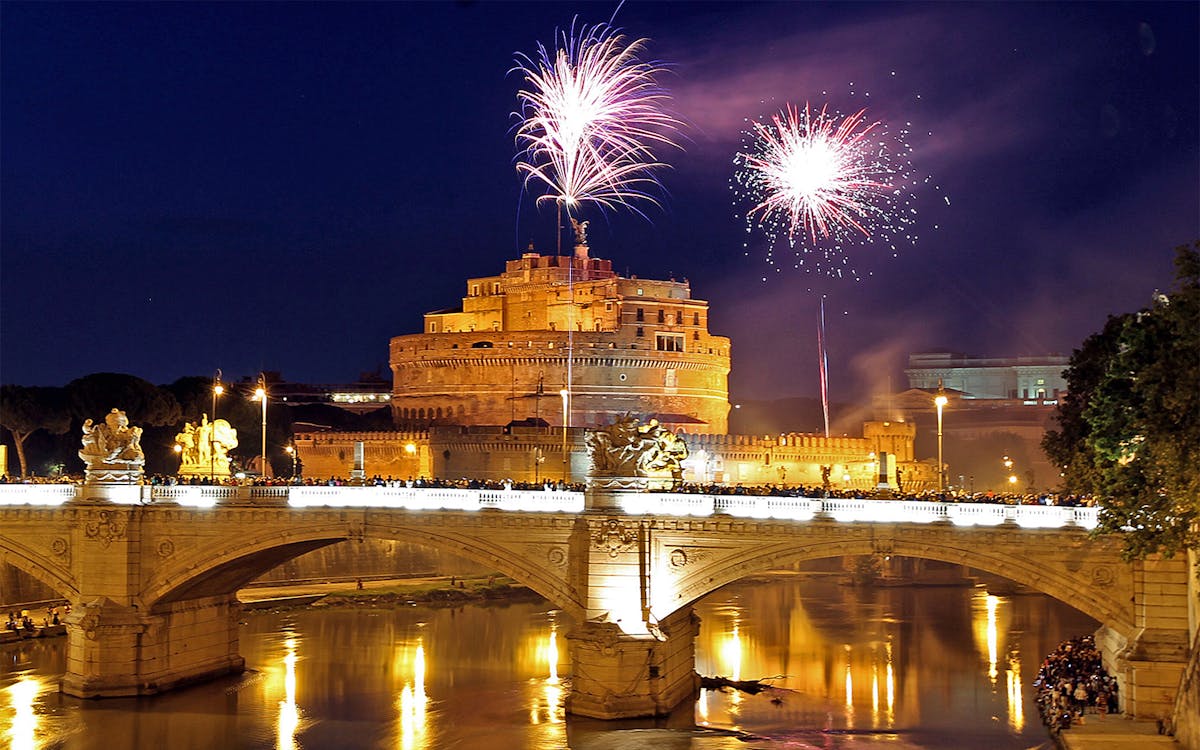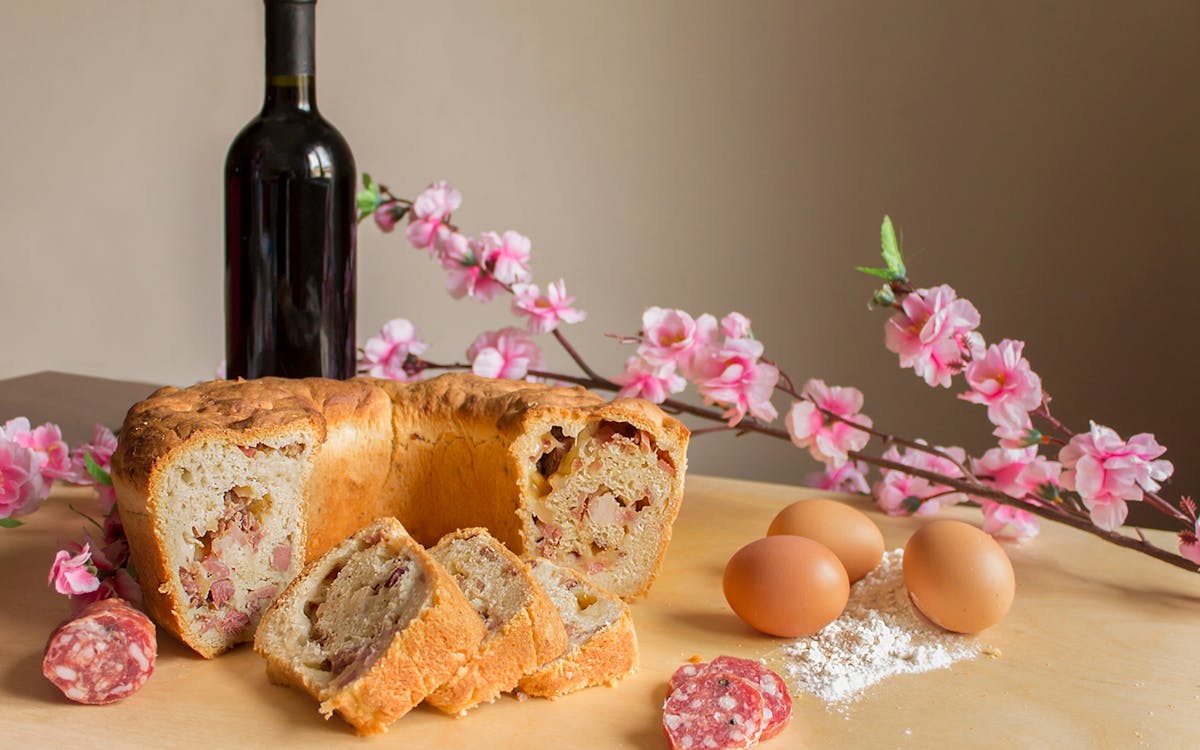The rise of Christianity over millennia has left an indelible mark on Vatican City in Rome. From the crucifixion of St. Peter to its establishment as an independent country, Vatican City has evolved into the epicenter of the Roman Catholic Church. Easter in Rome unfolds over a week, commencing from Palm Sunday and culminating on Easter Monday – April 20, 2025. While many travel guides caution against visiting Rome during Easter due to the anticipated crowds, international visitors have heeded this advice. Surprisingly, Rome during Easter is not overwhelmingly crowded. Instead, it offers an opportunity for visitors to witness ancient traditions on a grand scale and participate in local festivities.
Easter in Rome: Traditions and festivities
In Rome, the Easter observances commence on Palm Sunday, as pilgrims flock to St. Peter’s Square, carrying palm leaves to symbolize Jesus' arrival in the city, inaugurating Holy Week. Following a brief pause of three days, the celebrations resume on Maundy Thursday, imbued with solemnity as it commemorates Jesus's final supper and initiates the Triduum.
On Good Friday, a somber atmosphere pervades as pilgrims mourn Jesus' crucifixion. They converge at the Colosseum for the Via Crucis, a moving ceremony blending solemnity with grandeur under the night sky. Even skeptics may find themselves swept up in the emotional intensity of participating in this ancient ritual within a venue steeped in history, witness to countless tragedies. Easter Sunday heralds joy and the celebration of Jesus' resurrection, with the city adorned in vibrant hues and children eagerly embarking on Easter egg hunts. Easter Monday, known as Pasquetta, signals the conclusion of Holy Week, as families bask in the spring weather with outdoor picnics, marking a time of togetherness and renewal.
How to celebrate Easter in Rome
1. Book a Vatican Tour to see Pope Francis
Regardless of religious affiliation, meeting Pope Francis evokes strong emotions. As the 266th pontiff of the Roman Catholic Church, he hosts audiences every Wednesday at the magnificent St. Peter’s Square. Securing a ticket for this event can be challenging, but you can reserve one conveniently through Headout. During Holy Week, the Pope's address holds profound significance, making it a once-in-a-lifetime opportunity.
2. Enjoy the Via Crucis celebrations at the Colosseum
On Good Friday of 2024, the Pope will commence his annual Via Crucis pilgrimage starting with a ceremony in front of the Colosseum at 9:15pm. This journey follows Jesus' 14-stage struggle to Mount Calvary, from Pilate's condemnation through His crucifixion and death until He was taken down from the cross and entombed. Each year has its own theme inspired by this sacred experience that is depicted in each station visited throughout the eventful evening.
3. Attend the St. Peter’s Basilica Mass on Good Friday
Good Friday holds deep significance for Christians, commemorating Jesus' sacrificial death as an expression of love and redemption for believers' sins. In Rome, the Pope presides over a solemn mass at St. Peter’s Basilica, starting at 5 PM. The liturgy revolves around reflecting on the events of Good Friday and reenacting key scripture passages. This emotionally charged gathering offers a rare chance to witness a centuries-old cultural tradition. While admission is free, securing a reservation is essential, as entry closes promptly.
4. Explore St. Peter’s Basilica and surroundings
If you are visiting Rome during the Holy Week you will be hard pressed to find time when you can explore the inside of St. Peter’s Basilica and other landmarks. On Easter Friday, you can take a morning tour of St. Peter’s Basilica, the Vatican Museums and the iconic Bramante Staircase. You can also climb the 231 stairs or take the lift to the top of St. Peter’s Dome and watch the panorama of Rome as it prepares for Easter. You can even send yourself a post from the Vatican Post Office in St. Peter’s Square and commemorate the occasion!
5. Have a Pasquetta Picnic at Villa Borghese
Pasquetta or Little Easter is celebrated on Easter Monday, and heralds the onset of spring, and Roman families celebrate it by being outdoors with family and friends. A picnic is the best way to enjoy Pasquetta and a great place to do that is the garden of Villa Borghese. You can shop for a picnic from Campo dei Fiori on Saturday or buy a pack from GiNa situated near the Spanish Steps. However, the museum at Villa Borghese is shut on Easter Monday and the Tuesday, which is why if you want to explore it you can do by taking a tour on any other day of the Easter Week.
Check out other fun things to do in Villa Borghese
6. Sample the best of Easter Food in Rome
Easter signifies the culmination of Lent, marking the conclusion of fasting and penance with the freshest offerings of spring. Many culinary delights unique to Easter incorporate ingredients of religious significance in the Christian faith. When in Rome, don't miss the opportunity to savor specialties such as Colomba (an Easter cake akin to panettone), Torta di Formaggio (savory bread), and Corallina (salami seasoned with peppercorn and garlic). Embarking on a food tour is an excellent way to immerse yourself in Rome's gastronomic wonders, exploring top-notch restaurants and tantalizing street food stalls across the city.
7. Skeptics and booklovers can follow the path of illumination
If you are not one interested in the Good Friday Mass, then you can take a guided tour of the Path of Illumination as devised by Dan Brown in his bestselling novel ‘Angels & Demons’. Historically, the church may have opposed a lot of scientific discoveries but this trail likes to believe otherwise. On this tour you will cover the Four Altars of Science - St. Maria del Popolo Church, St. Peter's Square, St. Maria della Vittoria Church and Piazza Navona. It will eventually lead you to the ‘Church of Illumination’ itself, the Castel Sant’Angelo. The tour is a great way to explore Rome and get closer to reliving your Robert Langdon fantasy!
Check out the official Angels and Demons tour here.
8. Watch the Fireworks over Castel Sant’Angelo in Vatican City

For centuries fireworks have adorned the Baroque fortress of Castel Sant’ Angelo on the River Tiber. Every year a fireworks display marks the end of Holy Week on Easter Monday, the show runs for approximately forty minutes. The fireworks are vivid and form multiple patterns, making for a spectacular show. You can watch the show from across the bridge and the silhouette of the Castel makes for an incredible backdrop for the fireworks show. Apart from Easter Monday, you can also watch the fireworks show on the Feast of St. Peter and St. Paul and whenever a new Pope is coronated.
9. Walk around Rome and soak in the Easter Vibes
Easter is a festival that is held with as much reverence as Christmas in Italy, if not more! You will observe locals planning and preparing for their Easter celebrations and even the stores and restaurants will be gearing up for the festivities. You can also witness pilgrims coming in from all corners of the world to celebrate Easter at the Vatican. The atmosphere changes wildly from emotional with devotion, to electric with hope and positivity over the week. Exploring the city on walking tour and discovering its historic centre with the Spanish Steps, Pantheon, Trevi Fountain and Piazza Navona is the best way to soak in the Easter atmosphere.
10. Take a road trip to Naples and enjoy the Easter festivities

Naples is the historic coastal city on the Mediterranean Sea and the site of ancient ruins of Pompeii and Mount Vesuvius. It is approximately 220km from Rome and ideal for a quick road trip. A guided tour will take you on a city tour of Naples and Pompeii, which is also a UNESCO World Heritage Site. Once in Naples you can experience unique Easter traditions, and also sample Easter foods like Casatiello Napoletano (pastry ring with a stuffing of cheese and salami), and Pastiera Napoletana (a sweet tart with a filling of wheat, ricotta, and spices).
Read all about visiting Pompeii From Rome >>
Easter dining in Rome
Set Easter Lunch
A typical Easter Sunday Lunch comprises of lamb, potatoes and stuffed artichokes that are roasted to perfection! Flavio Al Velavevodetto in Testaccio is the best restaurant to sample this staple Easter menu.
Colomba
The dove shaped Colomba is type of pound cake, it is fluffy and mixed with candied peels and topped with almonds and pearl sugar. You can buy one at the Le Levain Roma on Via Luigi Santini.
Uova di Pasqua
Meaning Easter Eggs, these are traditional chocolate Easter eggs, but often come with a surprise inside them! Castroni is a chain of cafes and bakeries in Rome where you can find the best Easter Eggs.
Tips for visiting Rome during Easter
- Spring in Italy brings a lot of rain, and local folklore states that it always rains on Easter, if only for a brief spell. Safe to say it’s good to carry an umbrella or a rain-proof jacket with you.
- Even though a lot of international tourists avoid Rome on Easter, the city attracts a lot of pilgrims and travelers who are looking for authentic experiences. This means you have to book everything in advance. It will help you get good rates and also keep abreast of any changes in time schedules.
- Easter Sunday and Easter Monday are spent with families and many restaurants give the days off to their employees and remain closed. The few that are open do offer festive fare in special set menus. Also, it’s advisable to shop for basic dairy and food on Saturday in case you are traveling with kids and don’t find restaurants near your stay.
- The Easter Bunny is not a tradition in Italy, but you will still find chocolate eggs although they are hollow and filled with surprises. You might find Easter birds like dove with the eggs, which make more sense!
- All the masses at St. Peter’s Basilica are free but you will still need a reserved ticket to get in. You can send a fax to the Prefecture of the Papal Household with the number of ticket you will need, these tickets are assigned first come first serve. Even with the ticket you need to arrive early to get a seat at the Papal Mass.
- Dressing is of utmost importance all through Easter in Rome. All the ceremonies in the attractions are religious and you won’t even be allowed if your knees and elbows are not covered. Steer clear of shorts, flip flops and sleevless shirts during your visit.
- You should remember that all the Papal Masses are either done in Latin or Italian. Although, you are given a booklet with your ticket with information about the proceedings of the mass.
- The Pope is the most holy and reverent apostle to God for Catholics and you will find a lot of unruly crowd trying to get their way around to see the Pope up close during his movement in his popemobile. Keep a tight grip on your belongings and your kids!


